Search
Search Results
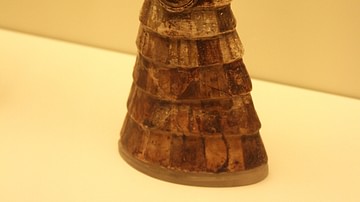
Definition
Egyptian Faience
Egyptian faience is a glassy substance manufactured expertly by the ancient Egyptians. The process was first developed in Mesopotamia, first at Ur and later at Babylon, with significant results but faience production reached its height of...
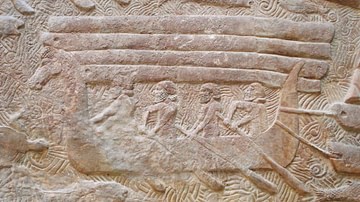
Definition
Phoenicia
Phoenicia was an ancient civilization composed of independent city-states located along the coast of the Mediterranean Sea stretching through what is now Syria, Lebanon and northern Israel. The Phoenicians were a great maritime people, known...
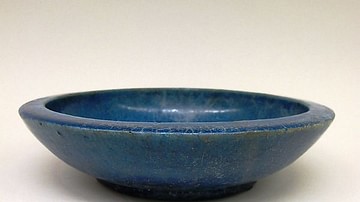
Image
Ptolemaic Blue Faience Bowl
This blue bowl is an excellent example of Egyptian faience ware, and why it was so highly regarded in the ancient Mediterranean. Ancient Egyptian artisans had been producing high-quality faience for millennia by the time this bowl was produced...
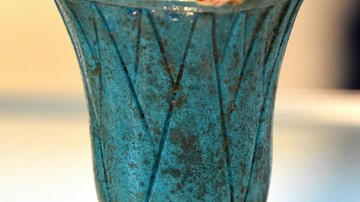
Image
Faience Drinking Cup from the 18th Dynasty
This is a faience (bluish-green) drinking cup. The cup's exterior surface was elaborated with incised decoration representing lotus flower petals. From Egypt. New Kingdom, 18th Dynasty, 1543-1292 BCE. (The British Museum, London)
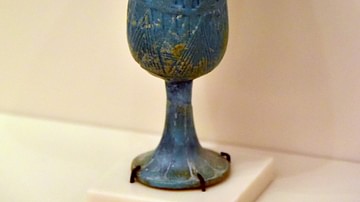
Image
Faience Cup of Shoshenq
Faience cup of Shoshenq with a representation of different deities. From Saqqara, Egypt. Third Intermediate Period, 22nd (Libyan or Bubastite) Dynasty, 944-716 BCE. It is on display at the Neues Museum, Berlin, Germany.
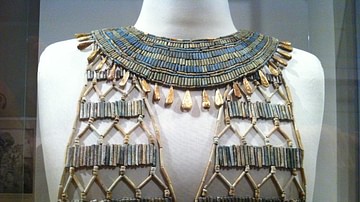
Image
Egyptian Beadnet Dress (Detail)
Egyptian, Dynasty 4, Reign of Khufu, 2551 - 2528 BCE, faience and gold. This beadnet dress is the earliest surviving example of a garment with the lozenge pattern. This pattern is frequently used when depicting women's clothing in Egyptian...

Image
Minoan Snake Goddess, Knossos.
Faience figurine of the Minoan Snake Goddess - her dominion was over nature and fertility. New-Palace period (1600 BCE). Heraklion Archaeological Museum, Crete.
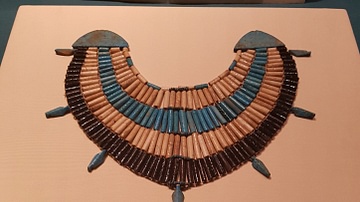
Image
Egyptian Broad Collar
Egyptian broad collar in Faience (wesekh). 11th Dynasty, about 2040-1985 BCE. Deir el-Bahari, Egypt. From The British Museum, (photo taken at The Powerhouse Museum, Sydney, Australia) The broad collar is one of the most characteristic...
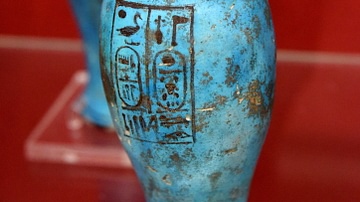
Image
Vase Inscribed with the Cartouches of Amenhotep II
This faience vase was inscribed with cartouches of the birth (nomen) and throne (prenomen) names of the Egyptian pharaoh Amenhotep II. New Kingdom, 18th Dynasty, reign of Amenhotep II, 1427-1400 BCE. Probably from the Valley of the Kings...
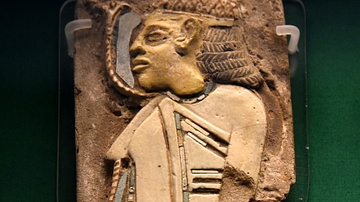
Image
Glazed Polychrome Tile from Tell el-Yahudieh
This decorative tile of glazed faience originally ornamented the walls of a palace of King Ramesses III at Tell e-Yahudieh in the Egyptian Delta. This (and other tiles) would once have been included in symbolic friezes illustrating Egypt's...